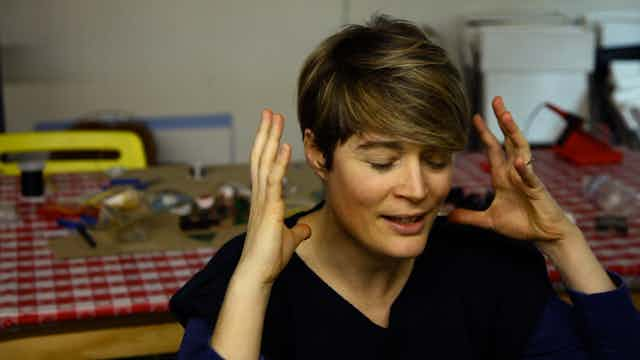Many of us have had this experience: you’re sure that something has changed, but unable to say what it is. Perhaps a colleague has new glasses, or has grown a beard. For all of your trying to identify the exact change, you’re only aware that something is different.
In our study, published today in the journal PLOS ONE, we investigated how and why this occurs and confirmed that the “sixth sense” — the ability to sense changes that cannot be identified — is just a myth.
Although reports of a sixth sense are common in lay writings and popular culture, the scientific evidence for this has been ambiguous. This might be due to experiment participants having a tendency to claim to have seen a change even when they are unsure, giving the false impression that they are able to sense changes when they cannot.
Picture this
Participants in our experiment were shown two colour photographs of the same female. Each photograph was presented for 1.5 seconds with a one-second break between them (see the diagram below).

After the second photograph was presented, we asked them if a change had occurred between the two.
If they reported a change, they were then asked to identify that change from a list of possible changes. Each participant completed 140 trials.
We were particularly interested in how many trials they could correctly detect a change, while being unable to identify which of the possible changes had happened. We called these “only-sense trials”.

But there is a problem – if a participant was to randomly guess that a change had happened, this might also result in an only-sense trial.
In order to estimate how many only-sense trials could be expected due to guessing, we incorporated “catch trials” in which no change occurred. By measuring the fraction of catch trials on which the participant reported a change, we could estimate the number of only-sense trials that could be generated by guessing in the trials where a change actually occurred.
Recording more than this number of only-sense trials would therefore be evidence that people can indeed sense changes that they cannot identify.
Scene and visual statistics
We showed that if the change between photos did not alter the “scene statistics” – for instance by a change in the total amount of red or green in the scene – our participants were, without fail, able to identify any changes that they sensed.
Conversely, when the change altered the “visual statistics” of the scene, participants could reliably sense changes that they could not identify. For example, if the subject of the photograph changed her hair colour from brown to red, the participant might unconsciously detect this overall increase in redness, but mistakenly think lipstick colour changed.
This would then result in an only-sense trial. Under the right circumstances, all experiment participants were able to reliably sense changes that they could not identify.
Our study therefore shows that people can indeed detect changes that they cannot identify, but debunks the claim that this is evidence for a sixth sense.

